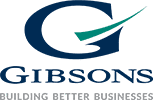Engage Your Staff and Improve Your Bottom Line
Organisational leaders who exhibit a committed focus to people practices not only increase their chances of having a more engaged workforce but can also drive profit growth.
Recent studies by Real World Group and others have found that organisations with a highly engaged workforce have significantly better profit growth than those that do not.
There is no doubt that there is a high correlation between profit growth and employee engagement.
What do we mean by employee engagement?
Some people see it as being ‘job satisfaction’ but this can be a transactional relationship that is only as good as the organisation’s last round of perks or bonuses. Other people gauge employee engagement by employees’ emotional commitment to their organisation. While this is an important element it is only part of the engagement equation.
From our extensive experience in business consulting and human resource management, we take the view that employee engagement focuses on the:
- Contribution of individuals to the organisation’s success
- Personal satisfaction of individuals in their role.
We believe that aligning employees’ values, goals, and aspirations with those of the organisation is the best method for delivering the sustainable employee engagement required for an organisation to thrive and increase profits.
Full employee engagement represents an alignment of:
- maximum job satisfaction – “I like my work and do it well”, with
- maximum contribution – “I help achieve the goals of the organisation”.
Leadership commitment is one of the key features of organisations that rank highly in relation to employee engagement and effective human resource practices.
There is a very strong correlation between leadership commitment and employee engagement.
While the need to build employee engagement within a workforce may seem clearly obvious to many employers and HR managers, some businesses still fail to understand the importance of effective human resource practices to develop and engage your people.
While leadership commitment needs to come from the top of the organisation it is important to understand the key role played by line managers who are critical to the building and maintaining of high employee engagement.
Building employee engagement includes:
- Recruiting staff who are aligned with the organisation’s values
- Promoting flexible workplace options for employees
- Creating succession plans for key staff
- Providing opportunities for continued employee growth
It requires managers to build their leadership skills and not just focus on their management skills and theories of human resource management.
Practical steps you can take to help encourage higher levels of employee engagement:
- Set a positive tone of partnership. This is not a performance appraisal (not that we are suggesting performance appraisals should be adversarial).
- Talk about the importance of the employee’s job and how it fits with the organisation’s larger goals.
- Discuss your employee’s top priorities. Many managers find gaps in perception which can have a negative impact on engagement.
- Ask ‘What support do you need from me?’ and ‘What kind of feedback is most useful to you?’
- Talk about ways to use the employee’s talents (the ones that this person enjoys using).
- Ask about job conditions: What gets in the way of great accomplishments? What gets in the way of a great day at work? What does the employee enjoy most?
- Discuss how you work together. It is not enough to agree you should meet regularly. Clarify what that term means to you both.
- Agree to meet again. You can’t have one discussion and check off the box that you have addressed your employee’s engagement successfully. Engagement levels are dynamic. Things change. The conversation lays a foundation for specific HR-related discussions about performance, development, or career management. It also establishes a common language you can use to check in quickly – and regularly – about engagement issues.
Employee engagement is an integral part of managing the human resources in your business which can transform unknown ‘resources’ into people who will engage with their work, engage with your business and drive profit growth.
